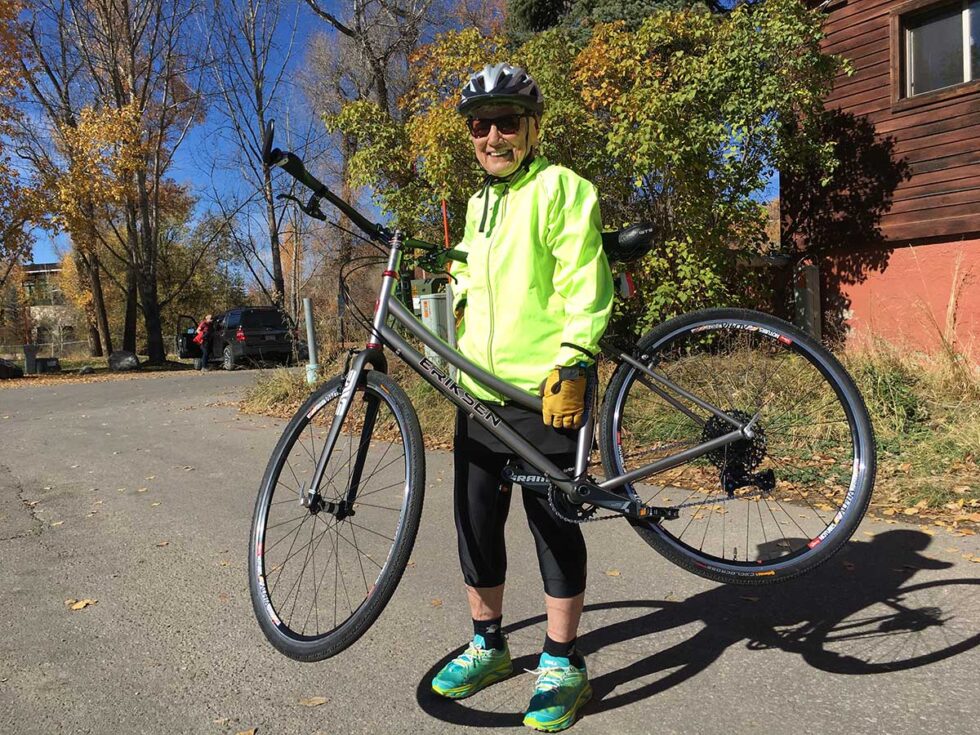Medical advancements are keeping people active well past retirement
Eighty-nine-year-old Vanda Nohinek has plans to raft down Cataract Canyon with her 15-year-old grandson next year. With two new hips and a new knee, one might question Nohinek’s sanity. But fear not she says.

“I feel 20 years younger than I am,” said Nohinek from her Steamboat Springs townhome. “I’m as good or better than I was before the replacements.”
Medical procedures replacing full hip and knee joints have gotten so sophisticated that even after Nohinek’s first hip surgery in 2014, she was back on the slopes skiing and out on the road riding bicycles. Then fall 2015 hit, and Nohinek said her right knee went out. Once again, she consulted with Dr. Alex Meininger of the Steamboat Orthopaedic and Spine Institute.
“The whole office is just tremendous … friendly and uplifting,” she said about the group of local surgeons who recently opened a new clinic space and outpatient surgery center, where they anticipate up to 90% of their surgeries will be performed.
Meininger explained that 20 years ago his mentors told surgical residents that knee replacement patients wouldn’t likely be skiing or playing tennis again.
“Nowadays, I virtually guarantee they’ll get back to those things patients enjoy,” Meininger said.
“Arthritis and joint pain are not a reason to make sacrifices in your life,” he added. “If you have goals and desires you need to fulfill, then joint replacement is something you should consider.”
Meininger cited a number of advancements including artificial joints designed to feel more natural and the sophisticated instruments used to install them more accurately.
“Today, we have available new techniques, such as customized instruments and cutting guides based on MRI or CT images, computerized navigation and robotics that allow surgeons to place the joints more perfectly,” Meininger explained. “I use computerized navigation to identify the axis of the joint and reproduce it precisely within 1% to 2% of the natural knee joint.”
After her knee replacement, Nohinek was back on her bicycle, riding through Europe and logging 26-mile marathon rides in Routt County.
So by the time she broke her right hip last fall, the spunky senior seemed almost nonchalant about yet another surgery.
“Wasn’t worried at all. What good would it do?” she laughed.
Nohinek described how quickly patients are up on their feet, usually the same day they come out of surgery.
“Physical therapy starts right away,” she said.
Nobody knows that better than Marcia Pomietlasz, another active Steamboat resident who was amazed by her two knee replacements in 2013 and 2015, both done by Dr. Meininger.
“I was so excited to have the procedure done,” said the 72-year-old avid tennis player who suffered from bone-on-bone arthritis in her knee joint. “The new knee works right away.”
Both women stressed that a positive attitude and consistent rehab, both with the physical therapist and at home, are essential to a full recovery.
Pomietlasz remembers when her own mother had knee surgery back in the 1980s.
“It was a whole different ballgame then. She was in the hospital for four days,” she said.
Nowadays, it’s becoming more frequent to go home the following day and in some patients even the same day.
Pomietlasz even noticed the difference between her two knee operations in 2013 and in 2015. She said by 2015, she didn’t have to wear a brace after the surgery thanks to new advances in techniques and medications.
“Previous anesthetic techniques caused lasting side effects like weakness in the quadriceps muscle, so patients needed a brace so their muscles didn’t give way on them,” Meininger said.
Meininger said surgeons are now using shorter-acting medications and targeting specific areas or nerves with anesthesia that need it, which leads to less pain and a faster recovery.
Today, Pomietlasz is skiing and playing tennis with ease.
“Even my daughter said, ‘you are skiing so much better now that you have new knees,’” Pomietlasz said. “I was favoring one leg over the other. So yes, this is a whole new skiing experience for me.”
Both Pomietlasz and Nohinek encourage older people to put away their fears and seek out answers.
“How badly do you want your life back?” Pomeitlasz asked. “That’s what joint replacement can do. It gives you your life back. The technology is so incredible, and it has to have improved in the five years since I had my last surgery.”
Meininger said he is also lucky to practice in an active, mountain community with motivated patients.
“Results and outcomes are improved when the patient participates in the process,” he said. “Our patients have higher expectations for themselves, which means more success.”
About two years ago, two private orthopedic practices merged to create the Steamboat Orthopaedic and Spine Institute, which is expected to compete with the reputable Vail-based Steadman Clinic. Michael Sisk, Andreas Sauerbrey, Alexander Meininger, Patrick Johnston and Clint Devin are owners of the new medical facility. Additional doctors in the practice include Bryan Bomberg, Adam Wilson, Alejandro Miranda and Lex Tracy.
Frances Hohl is a contributing writer for Steamboat Pilot & Today.
